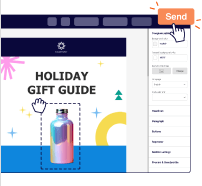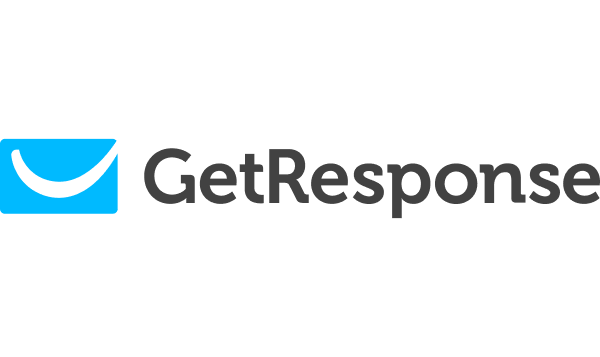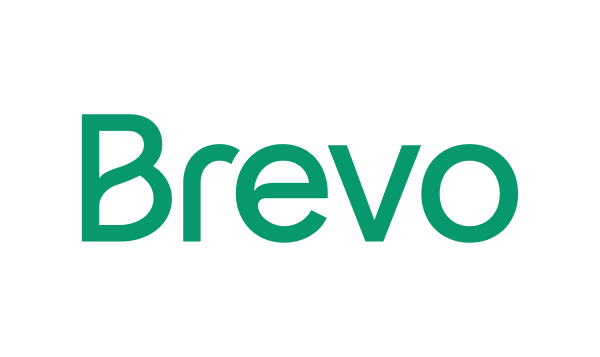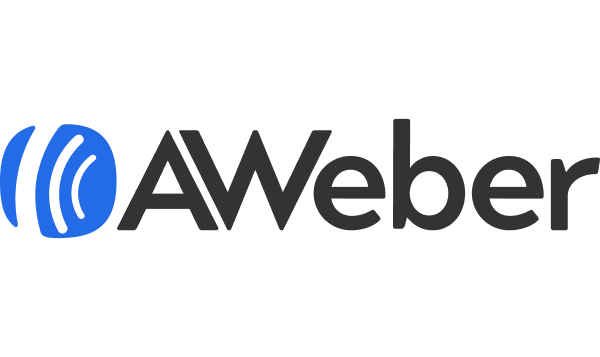Constant Contact had its moment as one of the best email marketing platforms for newcomers. But now, many companies are finding it limited, overpriced, and missing the flexibility modern marketing demands. So if you find yourself reading this guide, don’t worry—you’re not alone.
The good news is that the world of email and SMS marketing has exploded recently. You’ve got options! I dug into the data and found ten Constant Contact alternatives that give you more features and flexibility.
Disclaimer: This article evaluates Constant Contact alternatives, including Sender, which our company owns. Assessments are based on research, industry standards, and user feedback. No commissions are earned from links in this article.
Constant Contact Overview
Constant Contact is a long-standing email marketing platform tailored for small businesses that want reliable, easy-to-use tools. The platform blends email campaigns, automation, list management, and event marketing into a streamlined system that helps organizations expand their reach without a steep learning curve.
This email marketing platform particularly resonates with nonprofits, local retailers, and email service providers who value customer engagement, dependable deliverability, and event management features alongside Constant Contact’s automation.
Features
- Intuitive landing page & email builder;
- Comprehensive event management tools;
- Responsive phone & chat support;
- Top-notch email & event marketing tools;
- In-depth analytics.
Pros & Cons
- Intuitive drag-and-drop builder
- AI campaign-builder
- Excellent customer support
- Works seamlessly with ecommerce platforms
- Limited automation & segmentation
- Steep pricing model
- Outdated interface
- No ‘Free forever’ plan
Pricing & Value Concerns
Here’s a full breakdown of Constant Contact pricing:
- Free 30-day trial: $0 (100 contacts—100 email sends);
- Lite: $12/month (500 contacts—5,000 emails/month);
- Standard: $35/month (500 contacts—6,000 emails/month);
- Premium: $80/month (500 contacts—12,000 emails/month).
Constant Contact positions itself as a solution for small to mid-sized businesses, but its pricing doesn’t match the relatively basic feature set. While plans begin at $12/month for 500 contacts, costs climb quickly—and many standard features like segmentation and automation come at a premium.
Functional Limitations
While Constant Contact has secured its place as one of the better email marketing solutions for newcomers, it’s certainly not perfect. Newer platforms, unlike Constant Contact, now offer far deeper automation, better UX, and more flexible pricing models.
- Dated user experience. The interface feels somewhat old-fashioned, making campaign creation and navigation less smooth than on newer platforms (G2);
- Basic automation & segmentation. Workflow options and audience targeting are limited, restricting the ability to deliver highly personalized campaigns (G2);
- No lasting free plan. Constant Contact only offers a temporary trial—continued use requires a paid subscription, which may be a drawback for startups or budget-conscious small businesses (G2).
What to Look For in a Constant Contact Alternative
Before you make the switch, it’s worth taking a step back to evaluate what really matters in an email marketing platform. To help you choose the right fit for your business, here are the key features and qualities to look for:
- Advanced marketing automation. Look for a platform that goes beyond basic autoresponders. The best Constant Contact alternatives let you build automated workflows that respond to user behavior—like clicks, purchases, or website visits.
- Transparent, scalable pricing. Choose an email marketing platform that grows with your business. Transparent pricing means no hidden fees or sudden jumps as your list expands. The right alternative should offer flexible plans that fit your current needs and scale affordably.
- Generous free plan or extended trial. If you’re still testing the waters, a robust free plan or extended trial can make a huge difference. Top Constant Contact alternatives often include access to essential features like automation, analytics, and templates.
- Modern, flexible email templates and editor. A strong alternative should offer a modern drag-and-drop editor and plenty of customizable templates. This makes it easy to design visually appealing, mobile-responsive emails that match your brand’s look and feel—without needing a designer or coding skills.
- Proven email deliverability. Deliverability is the backbone of email marketing success. Seek a provider with a proven track record of getting emails into inboxes, not spam folders.
Constant Contact Alternatives Comparison — A Quick Roundup
Here’s a quick roundup of the best alternatives to Constant Contact:
| Alternative | Starting Price | Free Plan | Overall Rating | Best For |
| Sender | $7/month | Up to 2,500 subscribers + 15,000 emails/month | ⭐ 4.7 | Best for ecommerce, bloggers, and SMBs looking for affordable automation and multichannel campaigns |
| Omnisend | $11/month | Up to 250 contacts + 500 emails/month | ⭐ 4.6 | Best for ecommerce brands that want strong email + SMS automation and customer segmentation |
| ActiveCampaign | $15/month | No | ⭐ 4.1 | Best for businesses needing advanced automation, CRM integration, and deep customer journey tracking |
| Klaviyo | $20/month | Up to 250 contacts + 500 emails/month | ⭐ 3.9 | Best for ecommerce and DTC brands using Shopify or WooCommerce that need advanced personalization |
| GetResponse | $15/month | Up to 500 contacts + 2,500 emails/month | ⭐ 4.2 | Best for B2B and SaaS companies looking to create landing pages and automated sales funnels |
| Brevo | $8/month | Up to 500 contacts + 5,000 emails/month | ⭐ 4.5 | Best for startups and small ecommerce businesses wanting an affordable multichannel platform (email, SMS, chat) |
| Mailchimp | $20/month | Up to 500 contacts + 1,000 emails/month | ⭐ 3.9 | Best for small and mid-sized businesses seeking a beginner-friendly platform with CRM tools |
| Campaign Monitor | $12/month | No | ⭐ 4.1 | Best for design-focused teams and agencies wanting professional-looking, high-converting email campaigns |
| HubSpot | $10/month | Up to 2,000 emails/month | ⭐ 3.7 | Best for CRM-centric companies and SaaS businesses seeking an all-in-one marketing automation suite |
| AWeber | $13/month | No | ⭐ 3.7 | Best for entrepreneurs and small businesses looking for simplicity, reliable deliverability, and strong support |
If you’re contemplating making a switch and need a comprehensive review of better email marketing services than Constant Contact, you’ve come to the right place. Many businesses are searching for free Constant Contact alternatives as they explore their options.
That said, throughout this article I’ll use third-party resources, user reviews, and our domain expertise to make comparisons of Constant Contact competitors.
Top Constant Contact Alternatives (Full Reviews)
- Sender — Best Value Email Marketing Platform;
- Omnisend — Top Ecommerce Email & SMS Marketing Platform;
- ActiveCampaign — Advanced Automation & CRM for Growing Brands;
- Klaviyo — Personalization Powerhouse for Shopify & WooCommerce;
- GetResponse — Email Platform With Landing Pages & Automated Funnels;
- Brevo — Affordable Multichannel Solution With SMS & Chat;
- Mailchimp — Beginner-Friendly Email Marketing Platform With CRM Tools;
- Campaign Monitor — Design-Focused Email Software for Agencies;
- HubSpot — All-in-One Marketing Automation Suite (Enterprise-Level);
- AWeber — Simple Newsletter Platform With Strong Deliverability.
By the time you end up reading this blog, you’ll have all the details you need about the best email marketing platforms like Constant Contact to make an informed decision. So, let’s begin:
Sender — Best Value Email Marketing Platform
Best for: Ecommerce, bloggers, and small-to-medium businesses (SMBs) looking for a robust email marketing platform;
Sender Pricing: Starts at $7/month for 1,000 subscribers + 12,000 monthly emails;
Free plan: Available for up to 2,500 subscribers + 15,000 monthly emails.
After trying out several Constant Contact alternatives, Sender proved to be one of the most impressive—especially when it comes to email automation.
Even on the free plan, this email marketing solution puts you in control with powerful workflow tools. I was able to design detailed automations triggered by actions like website visits, link clicks, or purchases, which made my campaigns feel smarter and more personalized.
Another great thing about Sender is how smooth it is to use and navigate The drag-and-drop editor is intuitive, and the template library is modern and professional—there was no need for me to spend hours trying to rack my brain to come up with something original.
Overall, if you’re looking for a cheaper Constant Contact alternative with advanced email marketing features, Sender delivers outstanding value and performance.

Why It Beats Constant Contact
- Wallet-friendly pricing structure;
- Unlimited custom fields in segmentation (even on starter tier);
- 24/7 human support;
- SMS marketing (which is only available in the US for Constant Contact).
Key Features
- Intuitive email builder with readymade blocks;
- Live chat support with fast response times;
- Advanced segmentation and personalization;
- Built-in landing page builder;
- Exceptional email deliverability rates;
- Signup forms builder.
Pros & Cons
- Advanced automation capabilities
- Easy-to-use interface
- State-of-the-art segmentation functionality
- 24/7 human support
- Comprehensive analytics
- Free plan includes Sender branding
- Lacks built-in CRM features
Constant Contact vs. Sender
Sender packs advanced automation features that rival Constant Contact, even on its free plan. This means you can design intricate email sequences and target subscribers based on their behavior without breaking the bank.
While Constant Contact offers a broader range of features, you’ll often pay a premium for capabilities that Sender provides at a fraction of the cost. This makes Sender the best from Constant Contact alternatives.
Pricing comparison: Sender is 77% cheaper than Constant Contact. For 1,000 contacts, Sender costs $7/month vs. Constant Contact’s $30/month.
See why businesses choose Sender:
Omnisend — Top Ecommerce Email & SMS Marketing Platform
Best for: Ecommerce brands looking for a budget-friendly email marketing solution;
Omnisend Pricing: Starts at $16/month for up to 500 contacts + 6,000 monthly emails;
Free plan: Available for up to 250 contacts + 500 monthly emails.
Omnisend is one of the best Constant Contact alternatives if your main goal is to boost online sales.
What really makes Omnisend stand out for me, though, is how it goes beyond just email. I can add SMS messages directly into my automated workflows, so things like abandoned cart reminders, shipping updates, and promo texts all work together in unison.
I’ve also found its ecommerce integrations to be a big advantage. Connecting my Shopify, WooCommerce, or BigCommerce store took just a few clicks, and once it’s set up—I instantly could start sending personalized, high-converting email marketing campaigns without any extra hassle.
On top of that, Omnisend’s advanced segmentation tools have been a huge plus. I can target specific customer groups based on their purchase history, browsing behavior, and engagement level. This doesn’t seem like that big of an edge over Constant Contact, but it actually makes a noticeable upgrade over it in just over a week.
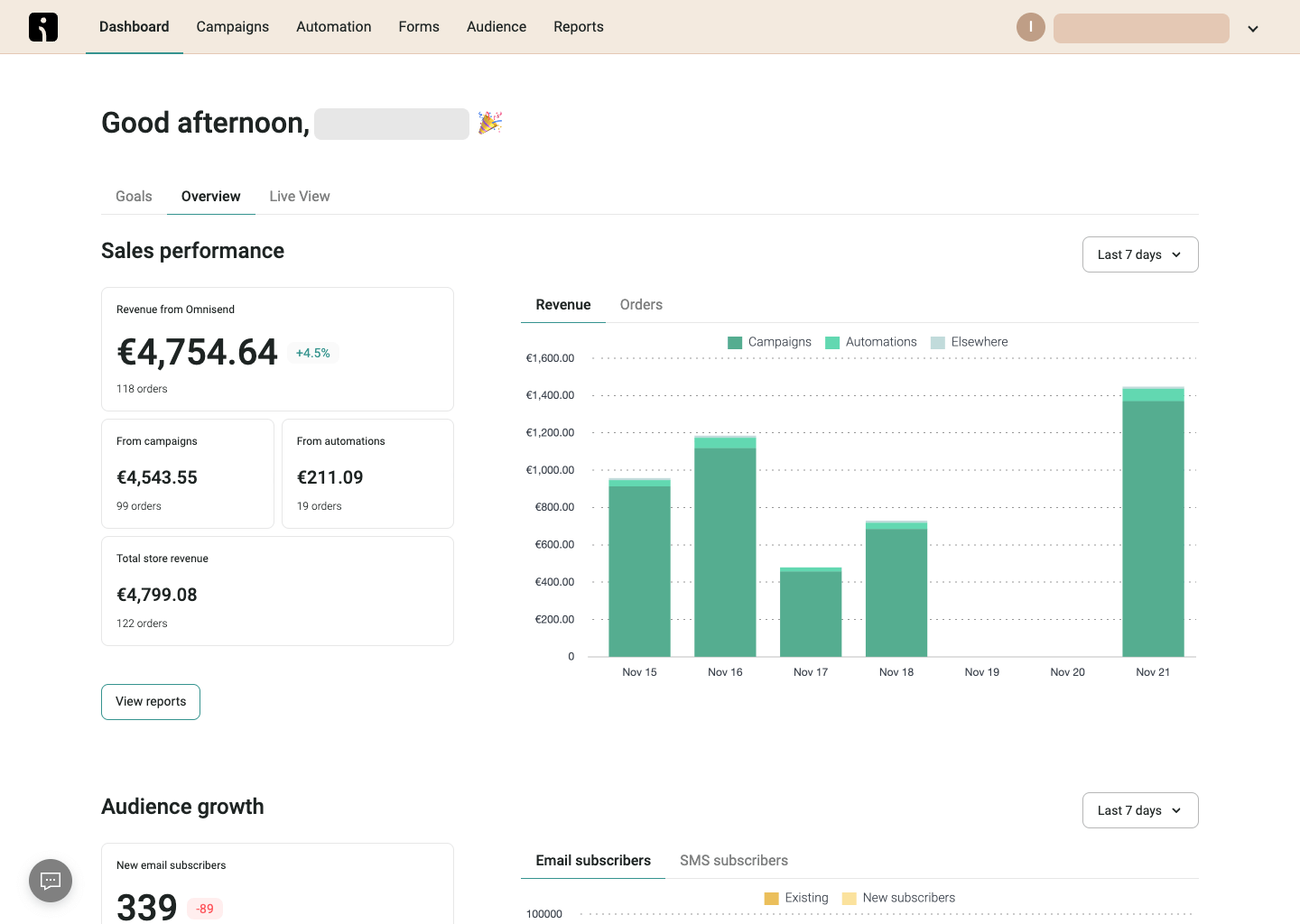
Why It Beats Constant Contact
- Better reporting;
- Superior automation;
- Stronger audience segmentation;
- Omnichannel integrations.
Key Features
- Pre-built ecommerce automations;
- Product recommendations;
- Integrated SMS marketing;
- Ecommerce platform integrations;
- Revenue attribution reporting.
Pros & Cons
- Ready-to-go automation workflows
- Multi-channel marketing
- Excellent 24/7 chat support
- A-grade personalization features
- Restrictive template editor
- Limited integrations
Constant Contact vs. Omnisend
Constant Contact offers a simpler, more user-friendly platform with essential ecommerce features like abandoned cart emails and automated post-purchase series. It’s a good starting point for smaller businesses or those new to email marketing.
Omnisend, on the other hand, is built for more advanced ecommerce marketing, providing robust automation workflows, deeper segmentation capabilities, and omnichannel integrations beyond email and SMS, making it one of the top cheaper Constant Contact alternatives.
Pricing comparison: Omnisend is 8% cheaper than Constant Contact. For 500 contacts, Omnisend costs $16/month vs. Constant Contact’s $12/month.
ActiveCampaign — Advanced Automation & CRM for Growing Brands
Best for: Businesses looking for advanced email automation, CRM integration, and in-depth customer journey tracking;
ActiveCampaign Pricing: Starts at $15/month for up to 1,000 contacts + 10,000 monthly emails;
Free plan: Not available. 14-day free trial available.
After testing both platforms side by side, I can confidently say ActiveCampaign stands out as the better choice for anyone who wants advanced marketing automation paired with powerful CRM features.
Compared to Constant Contact, which only offers basic segmentation, ActiveCampaign lets me target my audience with incredible precision. I had segmented my lists based on things like website behavior, email engagement, purchase history, and even custom fields.
That level of detail has made a noticeable difference in my campaigns—the engagement rate has gone up, and conversions have followed as well. All in all, if you’re serious about building deeper customer relationships without losing that edge on automation, ActiveCampaign is a great Constant Contact alternative you should give a go.

Why It Beats Constant Contact
- Superior analytics & insights;
- Automation depth;
- More extensive integration library.
Key Features
- Top-tier automation & personalization capabilities;
- Drip campaign sequences;
- Lead and contact scoring for sales funnel automation;
- Site tracking and event monitoring;
- Built-in CRM funnel.
Pros & Cons
- CRM integration
- Reliable email deliverability
- Advanced segmentation
- Over 900 native integrations
- Outdated template library
- Steep price jumps when upgrading
Constant Contact vs. ActiveCampaign
While both platforms offer email marketing tools, Constant Contact vs. ActiveCampaign comparison shows they cater to different levels of marketing expertise.
Constant Contact, with its simpler automation and segmentation, might be suitable for beginners, but for businesses that need stronger automation, ActiveCampaign is the go-to alternative to Constant Contact.
Pricing comparison: ActiveCampaign is 50% cheaper than Constant Contact. For 1,000 contacts, ActiveCampaign costs $15/month vs. Constant Contact’s $30/month.
Klaviyo — Personalization Powerhouse for Shopify & WooCommerce
Best for: Ecommerce and Mid-sized DTC brands looking for an email marketing software with advanced tools;
Klaviyo Pricing: Paid plans start at $30/month for up to 1,000 contacts and up to 10,000 emails/month;
Free plan: Available for up to 250 contacts and 500 monthly emails.
Klaviyo is another fine example of where Constant Contact drops the ball. Klaviyo feels purpose-built for online stores, offering deep customer insights and advanced automation tools that connect seamlessly with platforms like Shopify and WooCommerce.
For instance, I set up a multi-branch automation based on browsing behavior, cart value, and purchase history. Less than a week later, I saw engagement and conversions improve. The product recommendation engine and smart send-time optimization made my campaigns feel more personal and data-driven—something Constant Contact just can’t match.
The interface can be a bit intimidating at first, but once you get the hang of it—the control and customization are incredible. While Klaviyo’s free plan is limited and the paid plans are pricier, the value this Constant Contact alternative delivers for ecommerce brands is undeniable.
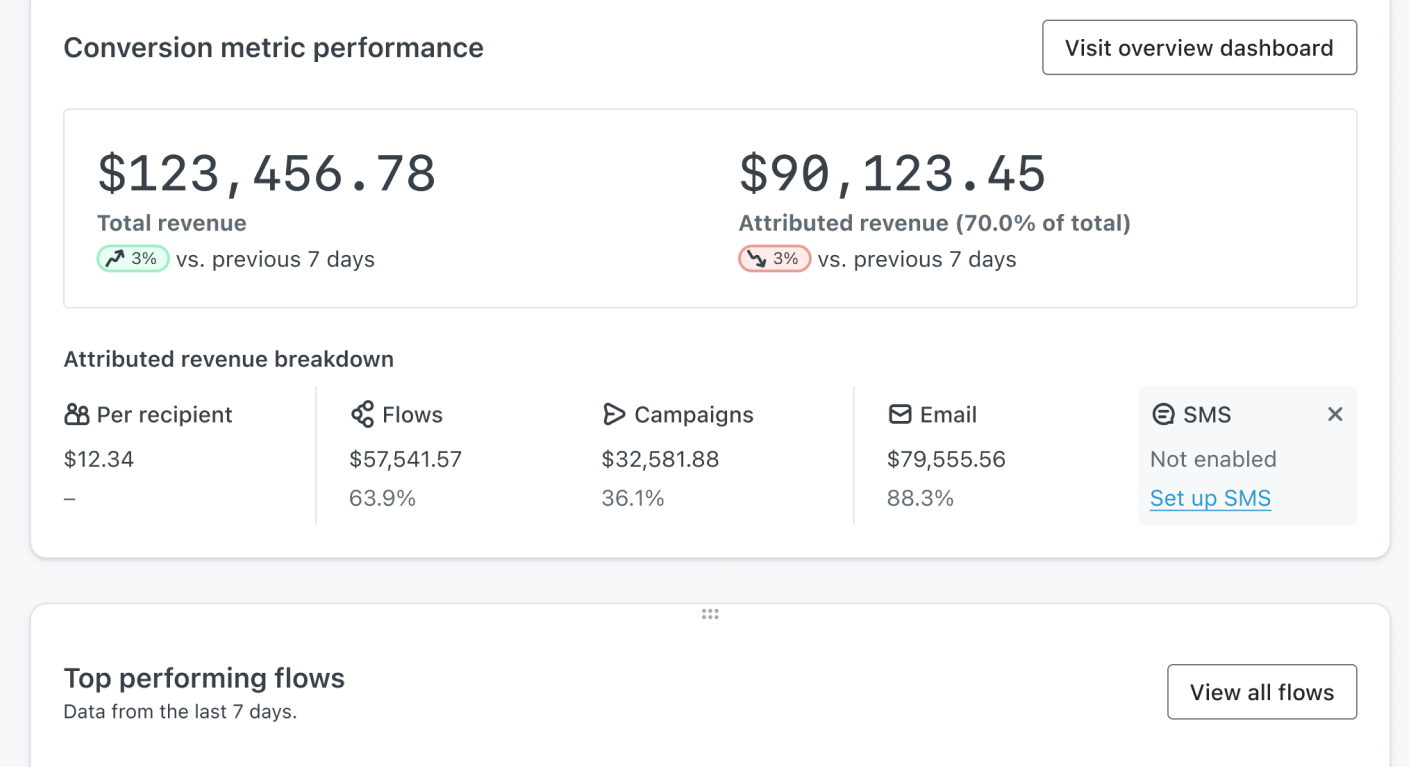
Why It Beats Constant Contact
- Ecommerce focused;
- Free plan;
- Better revenue attribution;
- Advanced segmentation;
- Predictive send times & product recommendation features.
Key Features
- Data-driven segmentation;
- Predictive analytics;
- Advanced personalization;
- Unified platform;
- Powerful A/B testing tools.
Pros & Cons
- Great ecommerce tools
- Strong automation features
- Top-tier A/B testing capabilities
- Intuitive visual automation builder
- Steep learning curve
- Support prioritizes higher-tier accounts
- Advanced features are behind a paywall
Constant Contact vs. Klaviyo
Constant Contact provides an easy-to-use platform with core email marketing tools, making it a solid choice for small businesses or beginners. It covers essentials like drag-and-drop templates, basic automation, and contact management, but its feature set is fairly limited.
In contrast, Klaviyo is designed for growth-focused ecommerce brands. With advanced segmentation, AI-powered automation, predictive analytics—not to mention deep Shopify integrations—it goes far beyond the basics.
While Constant Contact is more approachable for newcomers, Klaviyo delivers the data-driven precision and flexibility that larger stores and experienced marketers need to scale.
Pricing comparison: Klaviyo is 67% more expensive than Constant Contact. For 500 contacts, Klaviyo costs $20/month vs. Constant Contact’s $12/month.
GetResponse — Email Platform With Landing Pages & Automated Funnels
Best for: B2B & SaaS companies looking to plan complex email automations and CRM integrations;
GetResponse Pricing: Starts at $15/month for up to 1,000 contacts + unlimited emails;
Free plan: Available for up to 500 contacts + 2,500 monthly emails.
After spending some time with GetResponse, I found it strikes a great balance between affordability and advanced features—perfect if you want more than just basic email marketing. The drag-and-drop email editor makes building campaigns super easy, and I really like the AI-powered content suggestions and the wide range of modern templates.
The landing page builder has also been a standout feature for me—it’s intuitive, flexible, and packed with customization options (including landing page templates). Combined with GetResponse’s powerful automation workflows, setting up targeted customer journeys that run on autopilot was a walk in the park.
After all is said and done, GetResponse is the real deal. It helped me save time, streamline my workflow, and engage my audience better— all without paying the premium prices of bigger enterprise tools.
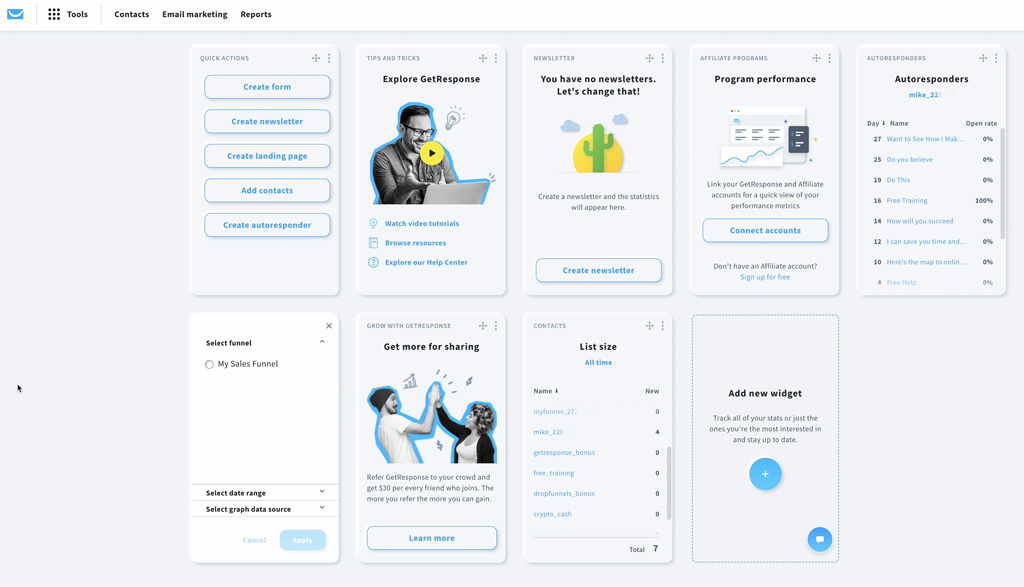
Why It Beats Constant Contact
- More budget-friendly;
- Visual workflow builder;
- Free plan;
- Deeper reporting.
Key Features
- Intuitive website builder;
- AI email generator;
- Webinar hosting;
- Extensive template library;
- Conversion-focused tools.
Pros & Cons
- Great conversion funnel functionality
- Design & spam testing tools
- Top-notch webinar hosting capabilities
- Intuitive visual workflow builder
- Limited A/B testing
- Clunky interface
- Steep price jumps when upgrading
Constant Contact vs. GetResponse
Constant Contact offers a straightforward, beginner-friendly platform with essential email tools and basic ecommerce features like abandoned cart reminders. It’s a solid option for small businesses or marketers who want simplicity without getting lost in advanced settings.
GetResponse, on the other hand, takes things further with a more comprehensive toolkit. Beyond email marketing, it provides a visual automation builder, AI-powered content generation, advanced analytics, and even a website builder. While Constant Contact is easier for newcomers, GetResponse is better suited for businesses looking to scale with more sophisticated automation and all-in-one marketing features.
Pricing comparison: GetResponse is 50% cheaper than Constant Contact. For 1,000 contacts, GetResponse costs $15/month vs. Constant Contact’s $30/month.
Brevo — Affordable Multichannel Solution With SMS & Chat
Best for: Ecommerce startups looking for an budget-friendly email automation solution;
Brevo Pricing: Paid plans start at $8/month for up to 500 contacts + 5,000 monthly emails;
Free plan: Available for up to ~9,000 emails/month and unlimited contacts.
Here’s another Constant Contact alternative that really kicks things up a notch. Brevo brings everything together—email campaigns, SMS marketing, live chat, and even WhatsApp messaging—all in one seamless platform, and it does it at a much more cost-effective price point.
This setup has made it so much easier to stay organized and communicate consistently across different channels. I don’t have to jump between tools or worry about syncing data manually. While WhatsApp marketing is only available on the Professional plan, SMS marketing capabilities are included in every plan (though SMS credits are paid for separately), which adds great value no matter the budget.
After spending some time with both email marketing providers, Brevo has felt like a smarter, more flexible upgrade to Constant Contact—without the higher price tag and better SMS marketing features.

Why It Beats Constant Contact
- Free plan;
- Built-in CRM;
- Broader range of ecommerce integrations;
- Multi-channel marketing.
Key Features
- Personalized automated messages;
- Built-in CRM tools;
- High-performing transactional emails;
- Prebuilt automation workflows;
- Landing page builder.
Pros & Cons
- Multi-channel support
- CRM included
- Affordable pricing structure
- Strong transactional email support
- Inconsistent deliverability rate
- A/B testing locked behind pricier tiers
- Reporting lacks advanced funnel tracking
Constant Contact vs. Brevo
Constant Contact shines with its ease of use and email marketing focus, particularly for small businesses seeking simplicity. It offers a solid set of features like email automation, social media tools, and basic reporting.
Brevo, on the other hand, boasts a more extensive feature set encompassing advanced marketing automation, SMS marketing, and a broader range of integrations, making it a great choice among Constant Contact alternatives.
Pricing comparison: Brevo is 33% cheaper than Constant Contact. For 500 contacts, Brevo costs $8/month vs. Constant Contact’s $12/month.
Mailchimp — Beginner-Friendly Email Marketing Platform With CRM Tools
Best for: Small and medium-sized businesses seeking an affordable Constant Contact alternative;
Mailchimp Pricing: Paid plans start at $20/month for up to 500 contacts and up to 6,000 emails/month;
Free plan: Free plan available. Includes up to 500 contacts and 1,000 monthly email sends.
Mailchimp is a household name in the world of email marketing, and for good reason. Its user-friendly interface, intuitive design, and robust feature set make it an excellent choice for newcomers, especially those seeking straightforward Constant Contact alternatives.
From my experience, Constant Contact and Mailchimp have a lot in common—they both offer an intuitive drag-and-drop editor, plenty of professional templates, and easy-to-use list management tools. But after trying both, I found that Mailchimp stands out for a few key reasons.
For starters, it offers a broader range of integrations and more in-depth reporting and analytics. What also impressed me was Mailchimp’s built-in Customer Relationship Management (CRM) tools. Using it, it was easy to track customer interactions, segment audiences, and personalize campaigns based on behavior or purchase history.
Overall, Mailchimp feels a bit more versatile Constant Contact alternative, especially if you’re looking for advanced insights and scalability.

Why It Beats Constant Contact
- Free plan;
- Larger template library;
- More robust analytics;
- Better optimized for scalability.
Key Features
- Drag-and-drop email builder;
- Essential automation features;
- Appointment scheduler;
- Top-tier audience segmentation tools;
- Extensive integrations;
- Rich template library.
Pros & Cons
- Powerful automation
- User-friendly interface
- State-of-the-art AI tools
- Wide range of integrations
- Advanced features hidden behind paid plans
- Predatory pricing structure
- Customer support can feel slow at times
Constant Contact vs. Mailchimp
Both platforms offer user-friendly interfaces and essential email marketing tools, making them suitable for beginners. However, Mailchimp edges out Constant Contact with its more modern design, broader integration options, and slightly more advanced reporting features
If you’re comfortable navigating a slightly larger platform and appreciate having more flexibility and data insights, Mailchimp comes out on top in the Constant Contact vs. Mailchimp debate.
Pricing comparison: Mailchimp is 40% more expensive than Constant Contact. For 500 contacts, Mailchimp costs $20/month vs. Constant Contact’s $12/month.
Campaign Monitor — Design-Focused Email Software for Agencies
Best for: Small and medium-sized ecommerce businesses looking for reliable Constant Contact alternatives;
Campaign Monitor Pricing: Starts at $12/month for up to 500 contacts + 2,500 emails/month;
Free plan: Not available. 30-day free trial available.
If beautiful, professionally designed emails are your top priority, Campaign Monitor is easily one of the best Constant Contact alternatives you can switch to.
During my hands-on experience, I was genuinely impressed by how polished and intuitive the platform feels. The drag-and-drop email builder made it simple to tweak templates or build custom designs from scratch, and the extensive selection of high-quality stock photos and illustrations added that extra layer of visual polish that really makes campaigns stand out.
Beyond the great design tools, I found that Campaign Monitor also packs plenty of marketing power. Its automation, segmentation, and analytics tools make it easy to send personalized messages and track exactly how they perform. I especially liked how I could create targeted email sequences that felt more personal and timely—something Constant Contact doesn’t handle quite as elegantly.
Overall, Campaign Monitor feels like a sleek, more professional Constant Contact alternative—perfect for anyone who values design and wants their emails to look just as good as they perform.
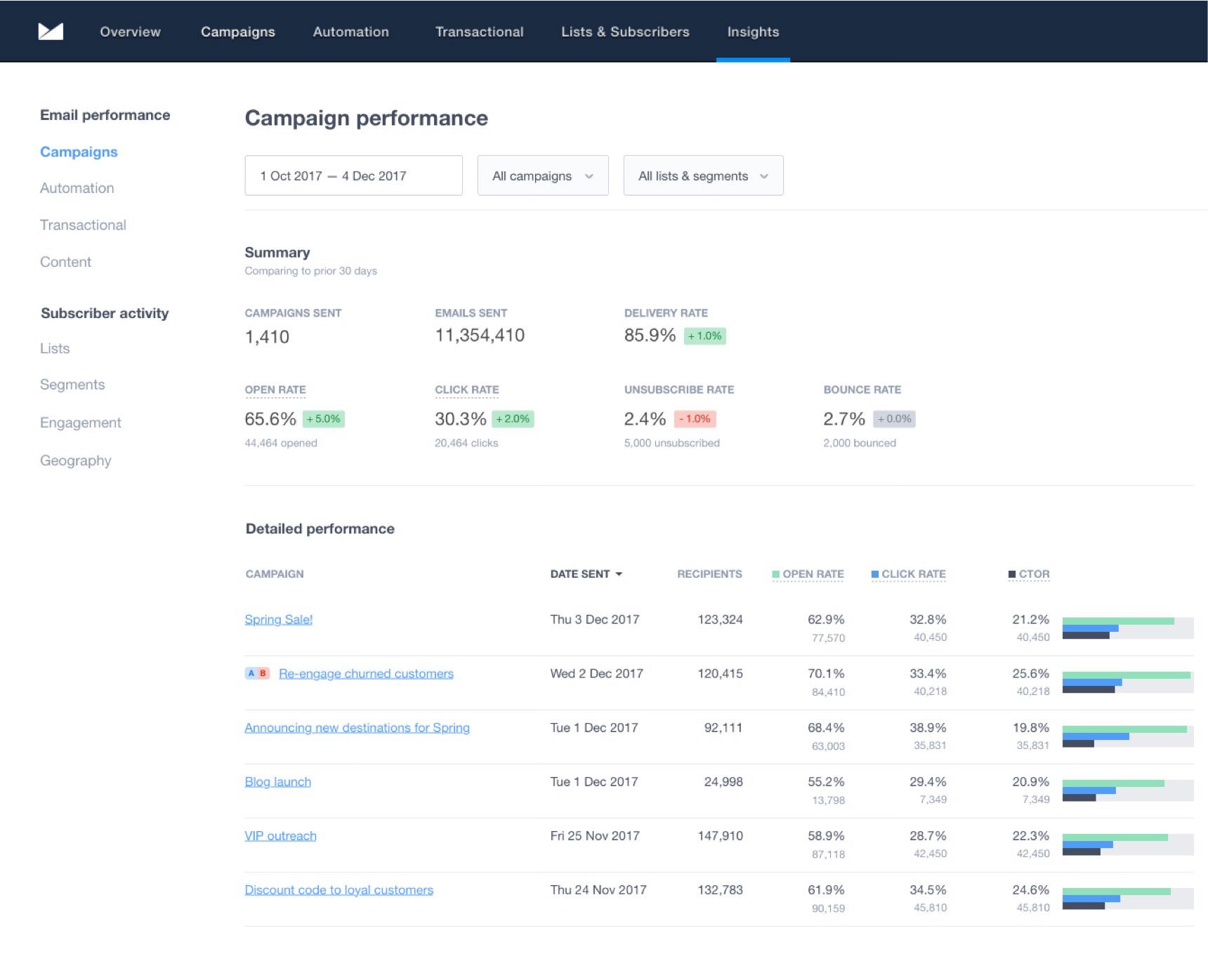
Why It Beats Constant Contact
- More advanced reporting;
- Visual automation builder;
- Advanced list segmentation;
- Superior personalization elements.
Key Features
- Intuitive drag-and-drop builder;
- Advanced segmentation with custom fields;
- User-friendly automation builder;
- Hyper-targeting capabilities;
- Great A/B testing tools.
Pros & Cons
- Intuitive drag-and-drop email builder
- Professional email templates
- Reliable email deliverability
- Responsive customer support
- Automation lacks some advanced branching
- Limited CRM capabilities
- API access locked behind higher tiers
Constant Contact vs. Campaign Monitor
If stunning, visually appealing emails are your top priority, Campaign Monitor trumps Constant Contact. While both platforms offer email templates and design tools, Campaign Monitor takes design to the next level.
With its sleek templates, advanced customization options, and access to high-quality stock imagery, Campaign Monitor allows you to create truly eye-catching emails that stand out in crowded inboxes.
Pricing comparison: Campaign Monitor starts at the same price point as Constant Contact. For 500 contacts, both Campaign Monitor and Constant Contact costs $12/month.
HubSpot — All-in-One Marketing Automation Suite (Enterprise-Level)
Best for: CRM‑centric companies and SaaS businesses looking for robust Constant Contact alternative;
HubSpot Pricing: Starts at $10/month for up to 1,000 contacts + 5,000 emails/month;
Free plan: Free plan available with up to 2,000 email sends per month.
After using both marketing automation softwares side by side, I found that HubSpot goes far beyond what Constant Contact offers—in pretty much every way possible. With built-in CRM, landing pages, forms, live chat, and automation tools, it feels much more enterprise-grade compared to Constant Contact’s small-business focus.
What I enjoyed about HubSpot is how everything is connected without any need for multiple open windows. I can track a lead from their first website visit all the way to becoming a loyal customer, and automate personalized follow-ups along the way. It’s a more holistic approach to marketing, and for my money—it’s the best way to nurture leads.
While I’m no fan of HubSpot’s pricing model, which makes prices skyrocket after the entry plan, this Constant Contact alternative is definitely worth the cost if you feel ready to invest in serious marketing infrastructure.
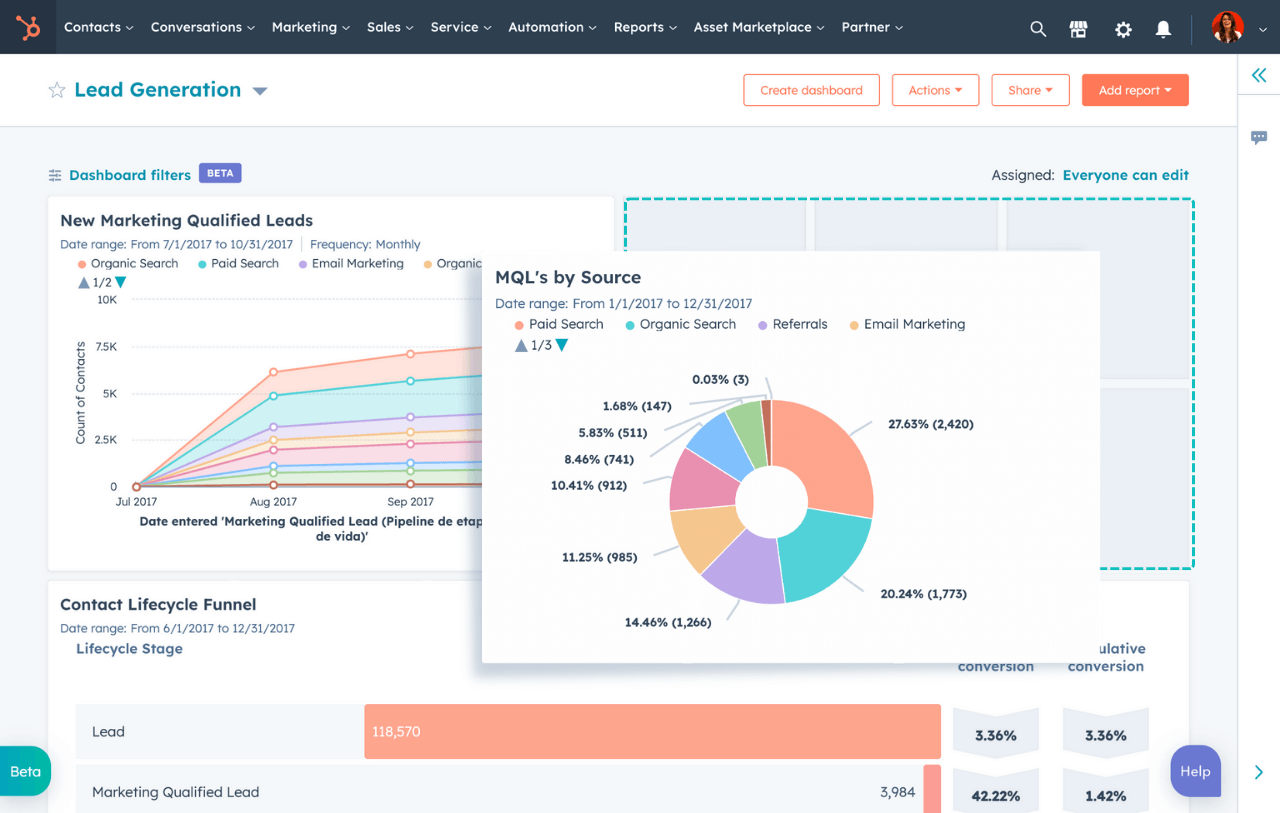
Why It Beats Constant Contact
- Better All-in-one solution;
- Deeper analytics;
- More advanced workflows;
- Fully-featured CRM integration.
Key Features
- Email marketing tools;
- Built-in CRM solution;
- Robust form builder;
- Integrations with all major marketing solutions;
- Landing page editor;
- Advanced segmentation.
Pros & Cons
- User-friendly interface
- Generous free plan
- Great CRM integration
- Insightful reporting
- High cost at scale
- Steep learning curve
- Basic templates
Constant Contact vs. HubSpot
Constant Contact provides a solid set of email marketing features, perfect for dipping your toes into the email marketing waters. However, HubSpot is a comprehensive marketing and sales platform that dwarfs Constant Contact in terms of functionality.
If you need powerful CRM tools, sophisticated marketing automation, landing pages, and a unified platform to manage the entire customer lifecycle, HubSpot is the clear winner in Constant Contact vs. HubSpot debate.
Pricing comparison: Hubspot is 66% cheaper than Constant Contact (at least at the start). For 1,000 contacts, Hubspot costs $10/month vs. Constant Contact’s $30/month.
AWeber — Simple Newsletter Platform With Strong Deliverability
Best for: Entrepreneurs, small businesses, and creators who want a straightforward email marketing platform with responsive support;
AWeber Pricing: Starts at $13/month for up to 500 contacts + 5,000 monthly emails;
Free plan: Available for up to 500 contacts + 3,000 emails/month.
AWeber is one of those classic email marketing tools that’s stood the test of time—and for good reason. During my hands-on, I found it to be super intuitive, with reliable deliverability and some of the best customer support I’ve come across.
One area where AWeber really impressed me is its landing page builder. And when combined with the Instapage plug-in, it was super easy to A/B test how these landing pages would perform.
Another highlight for me was AWeber’s deliverability rate, which hovered around 84%. In practice, that meant most of my emails consistently landed in subscribers’ inboxes rather than getting lost in spam folders.
Overall, with its clean interface, well-rounded features, and responsive phone support, AWeber has felt like a perfect fit for beginners and small businesses that want to get professional results without a steep learning curve.
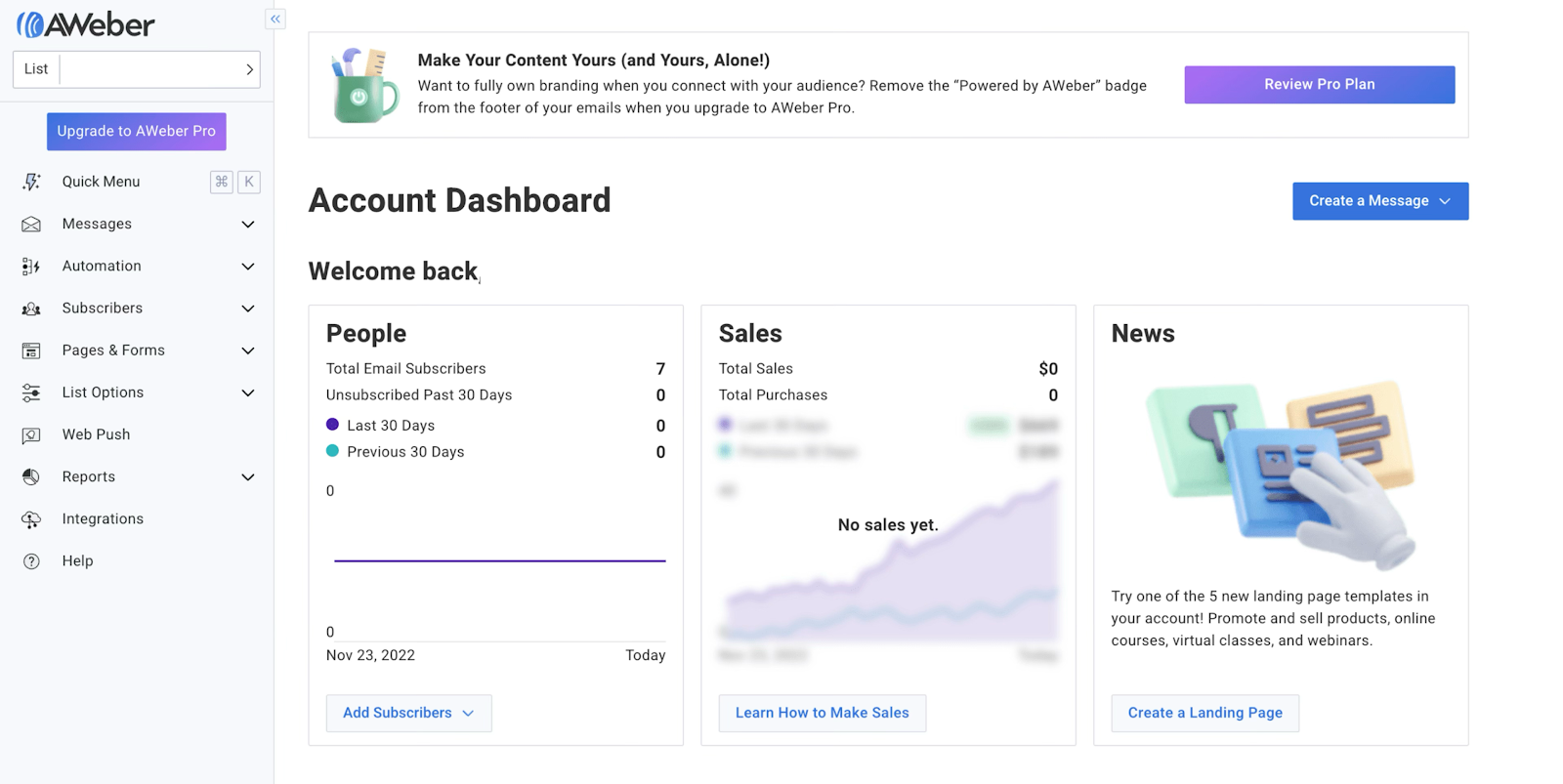
Why It Beats Constant Contact
- Superior customer support;
- Larger library of templates;
- More affordable entry-level plans;
- Stronger deliverability rate.
Key Features
- AMP email support;
- Sign-up form builder;
- Campaign analytics tools;
- Seamless native integrations.
Pros & Cons
- Reliable deliverability
- Real-time analytics
- Seamless ecommerce integrations
- Excellent support
- Fewer native integrations than competitors
- Limited advanced segmentation & conditional logic
- Basic interface
Constant Contact vs. AWeber
AWeber and Constant Contact are both solid choices for businesses seeking an easy-to-use email marketing platform, but AWeber pulls slightly ahead among Constant Contact alternatives regarding automation and deliverability.
AWeber boasts a more robust autoresponder feature set, allowing for more sophisticated email sequences and targeted follow-ups. Additionally, AWeber has a strong reputation for reliable email delivery, ensuring your messages reach your subscribers’ inboxes.
Pricing comparison: AWeber is 8% more expensive than Constant Contact. For 500 contacts, AWeber costs $13/month vs. Constant Contact’s $12/month.
Email Marketing Platforms Cost Calculator
Finding the best email marketing solution that matches your desired subscriber limit, budget, not to mention feature needs, can be a real hassle. That’s why we built Sender’s price calculator—a quick way to compare plans and see exactly what fits your business.
How We Evaluated the Top Alternatives
To identify the best Constant Contact alternatives, I spent around a week on each platform and analyzed user feedback from trusted sources like G2, Capterra, and Trustpilot.
That said, my evaluation focused on five key areas: ease of use, automation capabilities, pricing transparency, email deliverability, and overall value for money.
I also considered available integrations, customer support quality, and scalability—crucial factors for growing businesses. Each tool was compared directly against Constant Contact to see where it excels or falls short in functionality, flexibility, and cost.
FAQs
Is there a free version of Constant Contact?
No, Constant Contact doesn’t offer a free version. However, Constant Contact alternatives like Sender offer robust free plans, providing you with excellent free email marketing tools without the cost.
Which Constant Contact alternative supports SMS marketing?
Sender provides SMS marketing campaigns, allowing you to combine your email and text message marketing strategies. This feature makes it a strong replacement choice compared to Constant Contact and some other solutions that may not offer this integrated approach.
What is the cheapest Constant Contact alternative?
The cheapest Constant Contact alternative is Sender. Starting only at $7/month, this fine alternative offers powerful state-of-the-art email automation, advanced segmentation, built-in landing page builder, and detailed analytics—all at a fraction of the cost.
Which Constant Contact alternative has the best automation?
The alternative to Constant Contact with the best automation features is Sender. It offers powerful, easy-to-use automation workflows that let you create personalized email sequences, trigger messages based on customer behavior, and nurture leads automatically.
